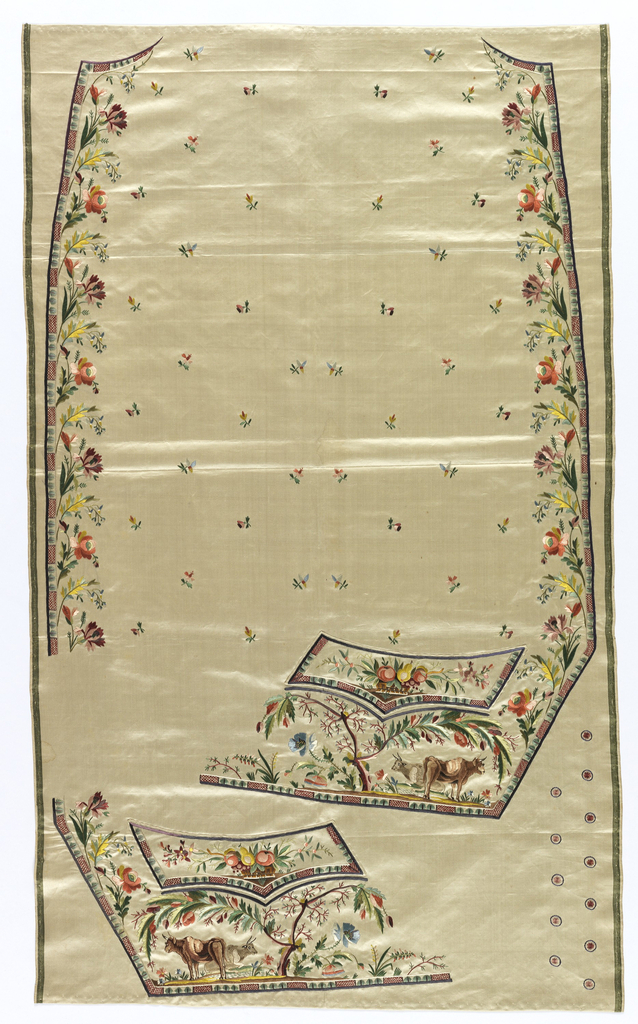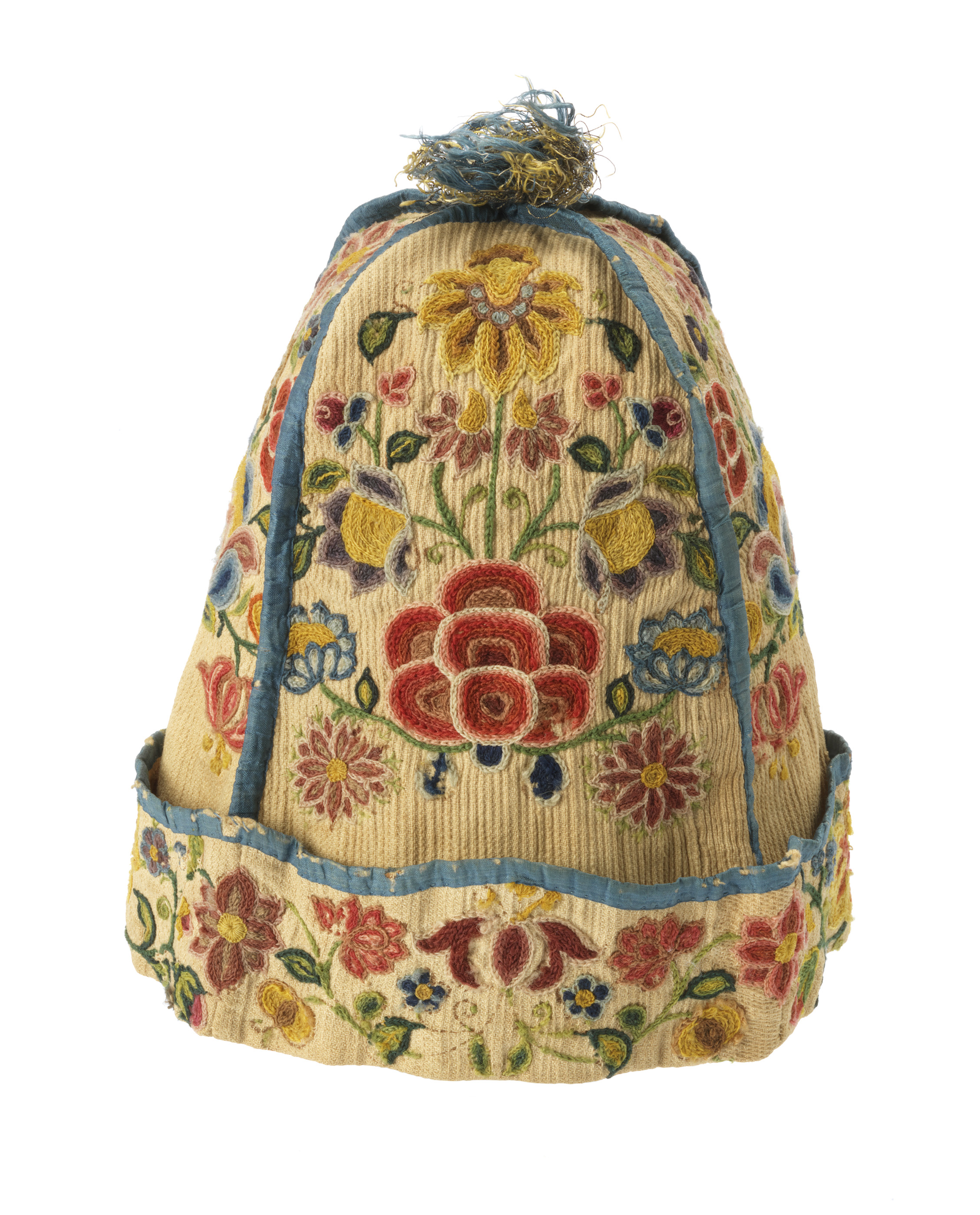Author: Kat Duiguid September is New York Textile Month! In celebration, members of the Textile Society of America will author Object of the Day for the month. A non-profit professional organization of scholars, educators, and artists in the field of textiles, TSA provides an international forum for the exchange and dissemination of information about textiles...
This 18th-century hat, called a nightcap, is decorated with crewel, a wool yarn often used to embroider linen. Known as crewelwork, this technique was frequently applied to nightcaps, where it was worked into bouquets of exotic and imaginary flowers and winding stems. Similar motifs also appeared on colorfully dyed chintz, an Indian cotton textile that...
The intricate patterns on this cap precisely fit its shape, suggesting that the fabric was woven specifically for this purpose. Most likely produced professionally, the weaving, embroidery, and tailoring of caps such as this would have been completed in separate workshops. Wigs were common among men of many different social classes in eighteenth century France,...
This 18th-century hat is called a nightcap, but it probably was not worn to bed. A man would use this cap to keep his head warm when he removed his wig, since a wig required short hair or a shaved head. A wig was proper attire for men of almost any status in 18th century...
The light color palette and spare decoration of this waistcoat are typical of the neoclassical style, which dominated design in the late eighteenth century and early nineteenth century. The silhouette is tight-fitting and markedly angular, with the lower hem cut straight across and rectangular pocket plackets. This was a departure from the skirted waistcoats with...




